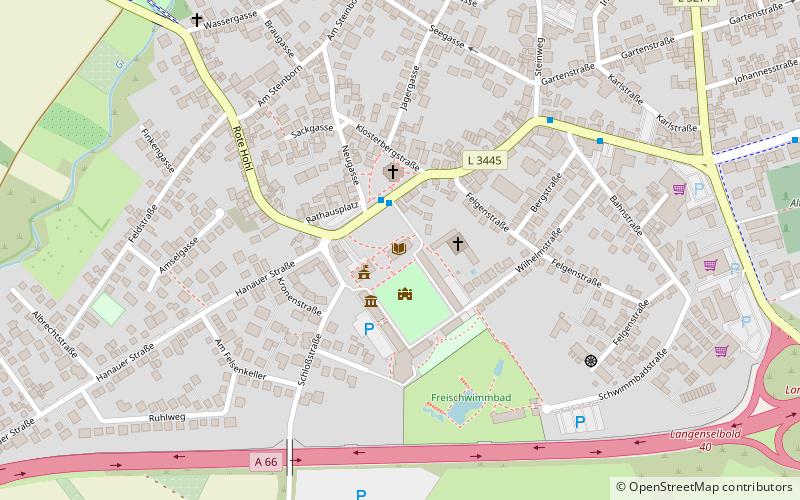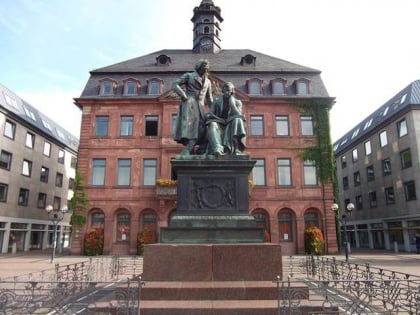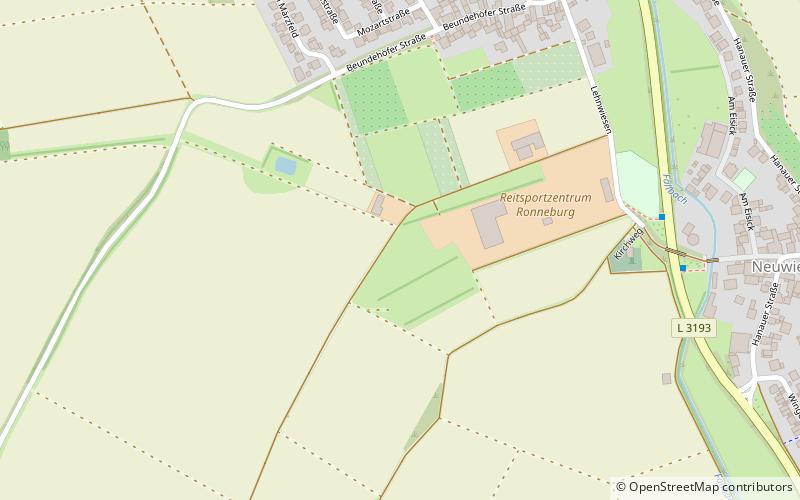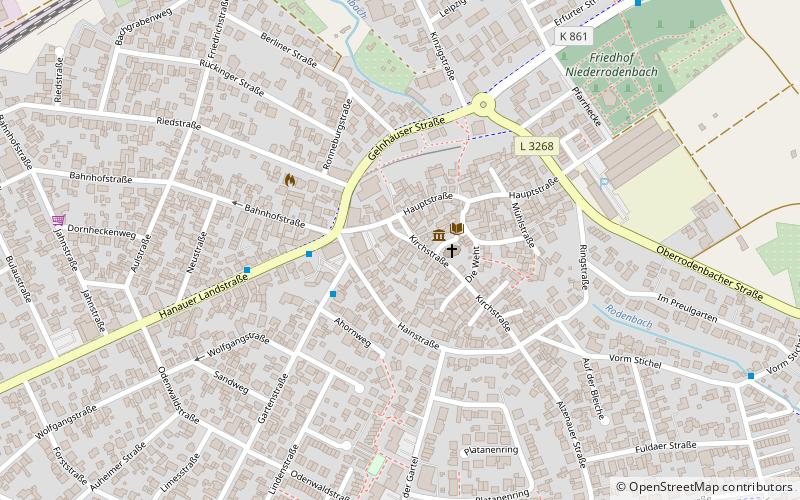Schloss Langenselbold, Langenselbold


Facts and practical information
Langenselbold Castle was built by the Counts of Isenburg-Birstein in Langenselbold between 1722 and 1752.
The building site was the grounds of the Premonstratensian Canons Regular Monastery of Selbold, which was dissolved in 1543. The architect was the master builder of the county of Hanau, Christian Ludwig Hermann, who worked on this project and for the parallel building project of the Protestant parish church of Langenselbold for Count Wolfgang Ernst zu Isenburg-Birstein.
The complex consists of six individual buildings, some of which are grouped in pairs around the four sides of a 95 × 127 m courtyard. A baroque garden was originally laid out here, the central fountain of which was later moved to Birstein Castle. On the eastern and western long sides of the courtyard are barns and sheds, and on the southern narrow side is a building that formerly contained servants' quarters and is now used as a restaurant. All of these buildings are single-story. The northern side of the complex is formed by two two-story buildings with mansard roofs. The western one, from 1722, is the oldest of the complex and served as a fruit store. The eastern one, from 1749, is the youngest of the ensemble and was the manorial residential building. Inside there are several rooms with rococo furnishings, silk wallpapers and paintings from the time of construction, including a portrait of the Elector-Archbishop Clemens August of Cologne by George Desmarées and one of Landgrave Wilhelm VIII of Hesse-Kassel by Johann Heinrich Tischbein the Younger. Another part of the furnishings comes from the circle around Johann August Nahl.
Christian Ludwig von Isenburg-Birstein moved into the castle in 1757, after he had resigned from military service. His father, Count Wolfgang Ernst, took care of the furnishings.
In 1940, the town of Langenselbold bought the fruit store and converted it into the town hall after the Second World War; in 1976, it bought the rest of the complex. In the process, a lifelong right of residence remained for some members of the princely family. Among them was the art historian Margarete Princess of Isenburg. The former manorial residential building now houses the municipal library, meeting rooms and a banquet hall.
Schloss Langenselbold – popular in the area (distance from the attraction)
Nearby attractions include: Brüder Grimm-Nationaldenkmal, Ehrensäule, Bergfried, Freigericht.









